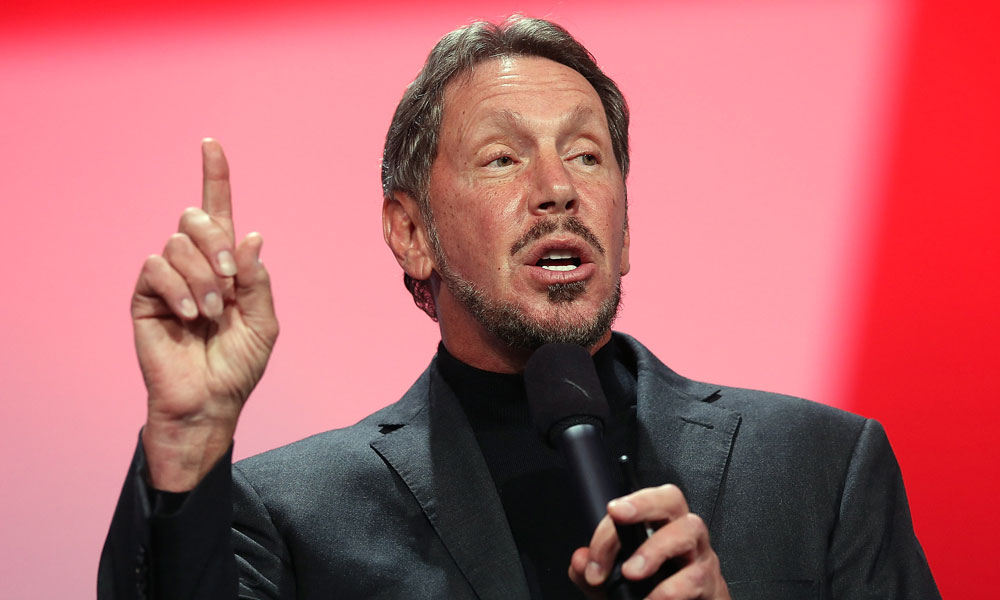
What Larry Ellison Teaches About the Nature of Philanthropy
The longtime Oracle CEO, who stepped down from the leadership role this week, has often been quiet about his giving. But there are lessons to be learned from the multibillionaire about the inconsistent, sometimes eccentric nature of big-name donors.
In 2010, Oracle co-founder and longtime CEO Larry Ellison—who definitely doesn’t need to worry about money—joined the Giving Pledge, a promise among some of the world’s richest people to give away most of their wealth to philanthropic causes before they die.
Nonprofits could learn a lot from the statement Ellison made [PDF] when he signed the pledge. The statement, in full:
To whom it may concern,
Many years ago, I put virtually all of my assets into a trust with the intent of giving away at least 95 percent of my wealth to charitable causes. I have already given hundreds of millions of dollars to medical research and education, and I will give billions more over time.
Until now, I have done this giving quietly—because I have long believed that charitable giving is a personal and private matter. So why am I going public now? Warren Buffett personally asked me to write this letter because he said I would be “setting an example” and “influencing others” to give.
I hope he’s right.
Ellison, who stepped down from his CEO role late Thursday but remains on as executive chairman and chief technology officer, was quiet about his philanthropy for many years because he didn’t want to play it up. Ellison, whose net worth tops $47 billion—making him the seventh-richest man on the planet, according to Bloomberg Businessweek—is known for showing off his wealth in myriad ways, most famously as a yachting enthusiast. But when it comes to charitable efforts, he’s kept his donations relatively close to his chest.
I have long believed that charitable giving is a personal and private matter.
When he does give publicly, however, his philanthropy highlights the inconsistent nature of donations. A few examples:
Giving can be spontaneous. Ellison once gave half a million dollars to an Israeli community center near the border of the Gaza Strip after finding out that the community center was not fortified from rocket attacks, even though the Israeli government had promised it was. The decision, made in 2007, was not deeply considered—Ellison was on a trip to Israel with Rep. Tom Lantos (D-CA), who died less than a year later. Ellison’s gift shows that it’s often important to get the issue in front of the right person.
Giving is often personal. As Ellison mentioned in his letter, he’s given away a significant chunk of his wealth to medical concerns. You can credit his elbow for that. More than two decades ago, Ellison shattered said elbow in a biking accident, requiring surgery. That led to some of his earliest giving endeavors. The level of care he received from the University of California-Davis inspired Ellison to donate to the school’s medical facilities, two of which now bear his name.
Giving can change on a whim. For years, Ellison has funded a self-named foundation that has funded numerous anti-aging efforts over 15 years. (It appears to have worked on Ellison, who looks pretty good for a 70-year-old.) But last year, the Ellison Medical Foundation’s focus changed unexpectedly, with the board deciding to expand its focus beyond specifically aging issues. This led to funding challenges for medical efforts that had relied on the foundation’s money.
Giving is on the donor’s terms. In 2012, Ellison bought an island. No, really. He owns 98 percent of Lanai, the sixth-largest island in Hawaii. But while analysts in the region expected Ellison to take some philanthropic steps to assist the local community, he had yet to take any large ones as of February. While Ellison’s Love Lanai website made big promises, he has yet to turn them into action—despite spending hundreds of millions on other efforts over the same period. It’s a reminder that, ultimately, the ball is in the philanthropist’s court when it comes to choosing how to donate money and time.
Ellison is a reminder that philanthropists are human, and no matter how much money they have, that truism won’t fade anytime soon.
How has your nonprofit worked with big-name donors in the past? Let us know your take in the comments.
(photo by Justin Sullivan/Getty Images)






Comments